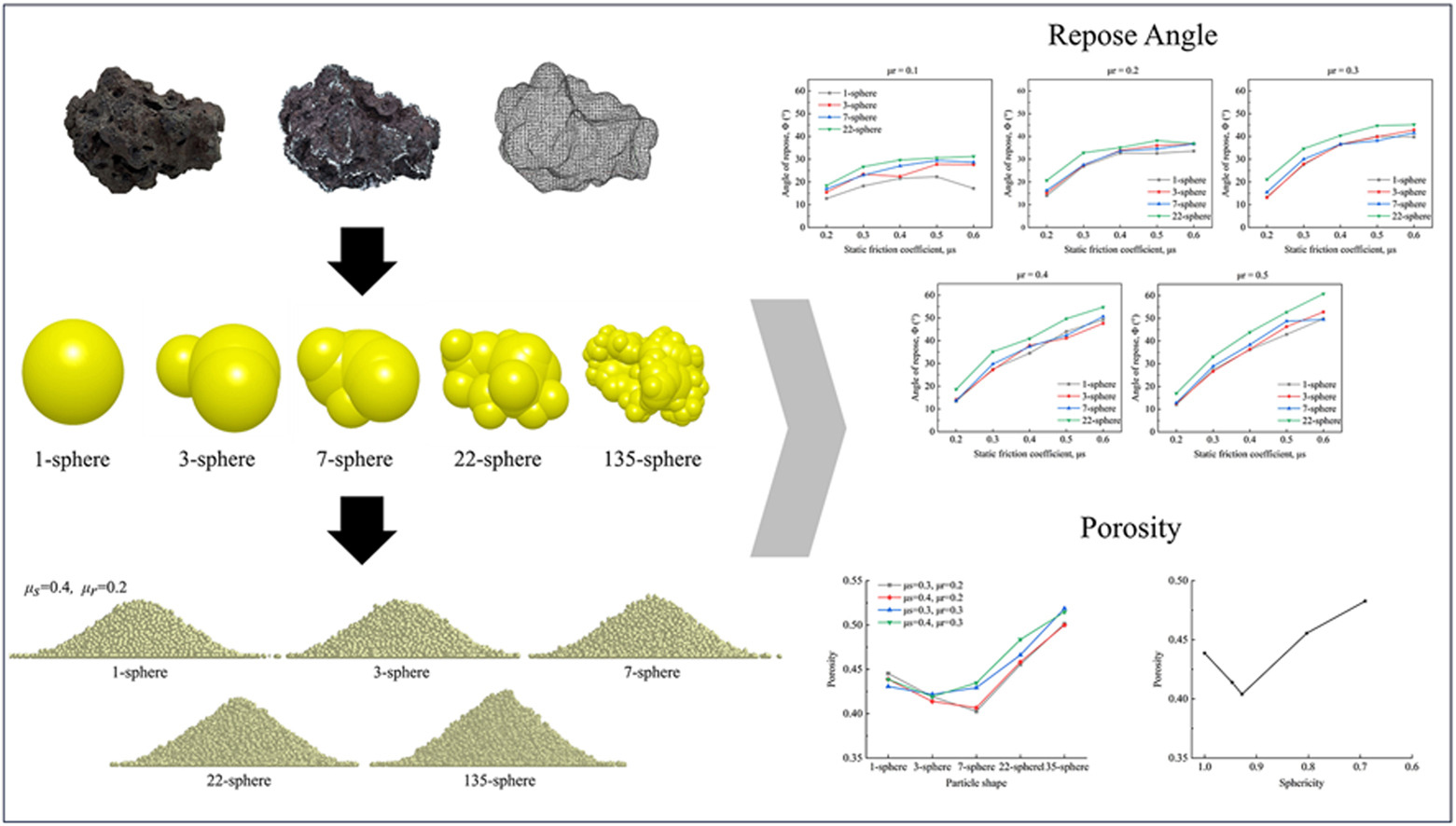Meng Li a *, Yaowei Yu b, Henrik Saxén a
• A real sinter particle is used as the template for particle generation.
• Five multi-sphere particles with varying sphericity are generated for simulation.
• The angle of repose is sensitive to static and rolling friction coefficients.
• Friction coefficients have different effects on the porosity of spherical and non-spherical particles.
• Particle shape has a significant and complex impact on the repose angle and porosity.
Shape has an undeniable impact on particle behaviour, and the shapes of naturally occurring granular matter are typically irregular. Computational studies of irregularly shaped particles are challenging but necessary to gain a better understanding of the flow of particulate matter. This study focuses on the behaviour of irregular sinter particles and applies the discrete element method to examine the effects of static and rolling friction coefficients and particle shape on the angle of repose and porosity of sinter piles. A three-dimensional model of an irregular sinter particle reconstructed by close-range photogrammetry served as the template for generating multi-sphere particles with varying numbers of sub-spheres (1, 3, 7, 22, and 135) and sphericity ranging from 1 to 0.69. Simulations of particle piles were conducted for a range of values of the coefficients of static and rolling friction. The results indicate that the angle of repose increases with static friction and also increases with rolling friction coefficient when it is lower than the static coefficient. The angle of repose shows clear dependence on particle shape, particularly for lower rolling friction coefficients. The friction coefficients for particles of five different shapes were individually determined through bulk calibration, and irregularly shaped particles in DEM were found to require lower friction coefficients. Porosity was marginally affected by the static and rolling friction coefficients for spherical particles, while non-spherical particles showed porosity increasing with the rolling friction coefficient. The relationship between particle sphericity and porosity was nonlinear: as sphericity decreases from 1.00 to 0.69, the porosity first decreases to a minimum and then increases. The findings confirmed that both friction and particle shape have a significant influence on the structure of sinter piles, with implications for material handling and processing in industrial applications.

